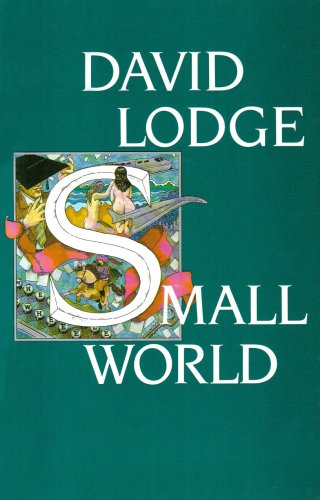TITLE: Technology and Change at the University, Circa 1984
AUTHOR: Eugene Wallingford
DATE: February 07, 2014 3:25 PM
DESC:
-----
BODY:
As I mentioned
last time,
I am re-reading David Lodge's novel Small World.
Early on in the story, archetypal academic star and English professor
Morris Zapp delivers a eulogy to the research university of the past:
The day of the individual campus has passed. It belongs to an
obsolete technology -- railways and the printing press. I mean just
look at this campus -- it epitomizes the whole thing: the
heavy industry of the mind.
... It's huge, heavy, monolithic. It weighs about a billion tons.
You can feel the weight of those buildings, pressing down the
earth. Look at the Library -- built like a huge warehouse. The
whole place says, "We have learning stored here; if you want it,
you have to come inside and get it." Well, that doesn't apply
any more.
... Information is much more portable in the modern world than it
used to be. So are people. Ergo, it's no longer necessary to hoard
your information in one building, or keep your top scholars
corralled in one campus.
Small World was published in 1984. The technologies that
had revolutionized the universities of the day were the copy
machine, universal access to direct-dial telephone, and easy access
to jet travel. Researchers no longer needed to be together in one
place all the time; they could collaborate at a distance, bridging
the distances for short periods of collocation at academic
conferences.
Then came the world wide web and ubiquitous access to the Internet.
Telephone and Xerox machines were quickly overshadowed by a network
of machines that could perform the functions of both phone and
copier, and so much more. In particular, they freed information
even further from being bound to place. Take out the dated
references to Xerox, and most of what Zapp has to say about
universities could be spoken today:
And you don't have to grub about in library stacks for data: any
book or article that sounds interesting they have Xeroxed and read
at home. Or on the plane going to the next conference. I work
mostly at home or on planes these days. I seldom go into the
university except to teach my courses.
Now, the web is beginning to unbundle even the teaching function
from the physical plant of a university and the physical presence
of a teacher. One of our professors used to routinely spend hours
hanging out with students on Facebook and Google+, answering
questions and sharing the short of bonhomie that ordinarily happens
after class in the hallways or the student union. -10 degrees
outside? No problem.
Clay Shirky recently wrote that
higher education's Golden Age has ended
-- long ago, actually: "Then the 1970s happened." Most of
Shirky's article deals with the way the economics of universities
had changed. Technology is only a part of that picture. I like
how Lodge's novel shows an awareness even in the early 1980s that
technology was also changing the culture of scholarship and
consequently scholarship's preeminent institution, the university.
Of course, back then old Morris Zapp still had to go to campus to
teach his courses. Now we are all wondering how much longer that
will be true for the majority of students and professors.
~~~~
IMAGE. The cover from the first edition of David Lodge's Small
World, by Wendy Edelson.
http://en.wikipedia.org/wiki/File:SmallWorldNovel.jpg
-----

